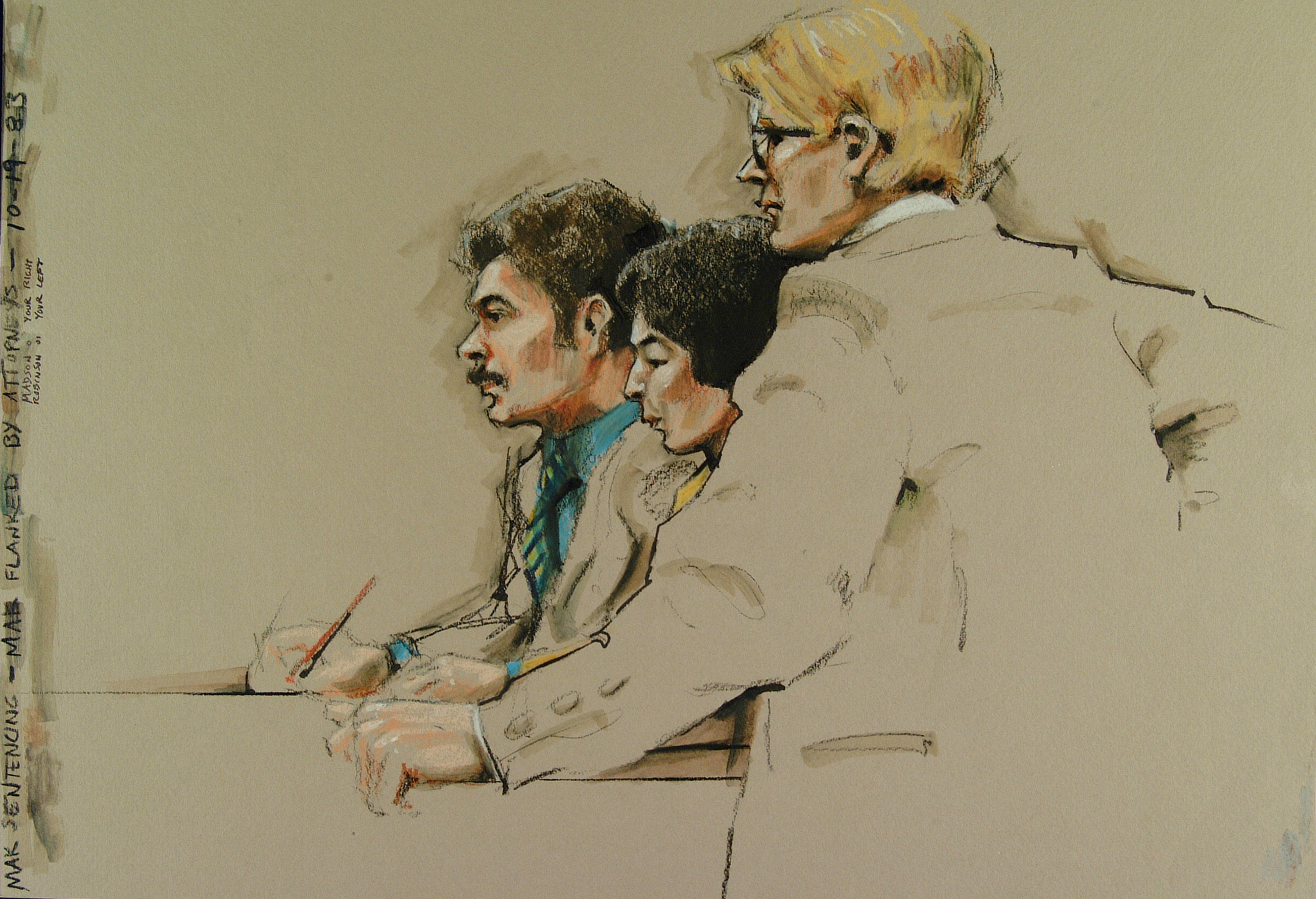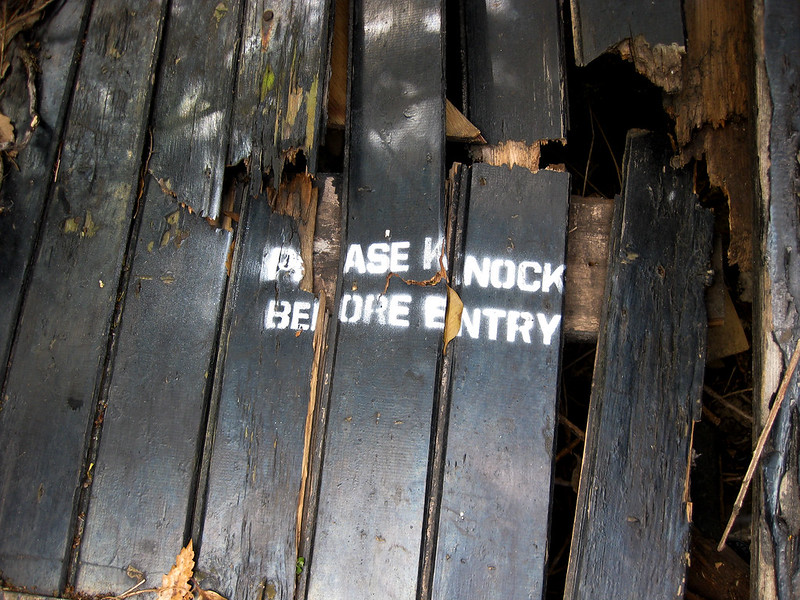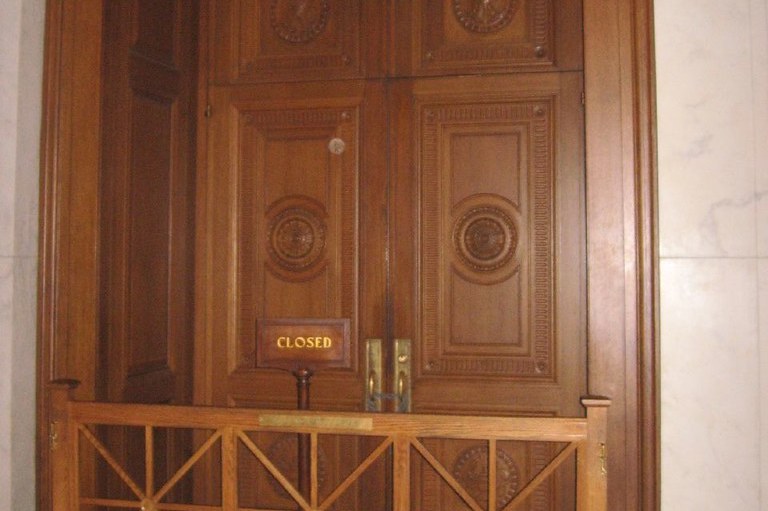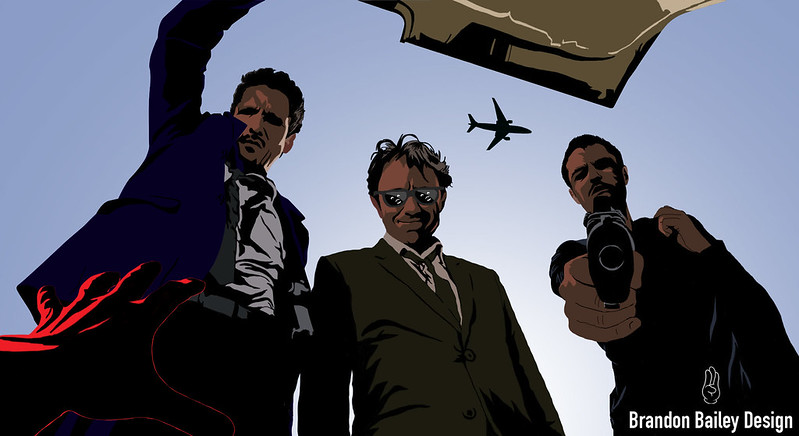This week’s top three summaries: R v Said, 2019 ONCA 378, R v Chowdhury, 2019 ABCA 205, and R v Espinoza-Ortega, 2019 ONCA 545.
R v Said (ONCA)
[May 7/19] Excessive Judicial Intervention - 2019 ONCA 378 [MacPherson, Juriansz and Rouleau JJ.A.]
AUTHOR’S NOTE: Trial judges in the common law system are not supposed to "descend into the arena" and participate in the prosecutions before them. Helping Crown or Defence counsel is forbidden as is questioning witnesses personally except by way of obtaining "clarification." Further, insulting Defence counsel and preventing the accused from telling his/her story through repeated interventions is a sure way to overturn a conviction. However, like all human beings, judges sometimes do not follow the law. The appearance of impartiality is affected by such violations. Herein, of the many interventions, the Ontario Court of Appeal thought it was only necessary to reproduce the insulting comments of the trial judge to Defence counsel to overturn the result.
Facts of the Case
"The appellant appeals from his convictions on two counts of assault using a weapon and one count of assault causing bodily harm. The persons assaulted were the owner and an employee of a pizza store. After the appellant entered the store to purchase a slice of pizza an argument took place that led to an altercation outside the store. Videos of the incident showed the appellant left the store and began walking away and the owner followed him outside the door of the store. The appellant turned around and walked back towards the owner and a fight ensued. The employee then ran out of the store and got involved in the altercation. The owner and the employee chased the accused across the street and meted out "rough justice"." (Para 1)
"The trial judge found that the appellant pulled out a screwdriver from his pocket at the very beginning of the altercation and used it to "punch" the owner in the abdomen and "stab" the employee on the left side of his face. The owner suffered no injury and the employee required ten stitches to close the gash on his face." (Para 2)
"The trial judge rejected the appellant's claim of self-defence, finding his use of the screwdriver against the unarmed owner and employee was not justifiable, proportionate or reasonable in the circumstances." (Para 3)
The Law of Excessive Judicial Intervention
" The court in Stucky, at para. 71, listed the types of intervention by trial judges that have resulted in the quashing of criminal convictions:
1. Questioning an accused or a defence witness to such an extent or in a manner which conveys the impression that the trial judge has placed the authority of his or her office on the side of the prosecution and conveys the impression that the trial judge disbelieves the accused or the witness;
2. Interventions which have effectively made it impossible for defence counsel to perform his or her duty in advancing the defence; and
3. Interventions which effectively preclude the accused from telling his or her story in his or her own way."
Application of the Law
"Nothing would be served by a lengthy itemization of the trial judge's many interventions. We are satisfied the trial judge's admonitions of counsel exceeded what was reasonably necessary and strayed into derision. For example, the trial judge said to counsel "English is not your forte. It is your first language, right?" She also rhetorically asked counsel "[You] did do criminal law at law school, right? . . . Now, if you need time to study up on these aspects I will give it to you, but I'm tired." The trial judge's belittling of the appellant's counsel would reasonably undermine his sense the trial was fair." (Para 9)
"Further, we are satisfied that the trial judge's comments to and queries of the appellant exceeded the bounds of what is permissible. The trial judge embarked on a pointed cross-examination of the appellant during his testimony in-chief very soon after he took the stand and continued it throughout his cross-examination. Before the appellant left the stand, the trial judge made it clear to him she had reached the view he was not to be believed, a view reached on a crossexamination in which she was heavily involved. The trial judge usurped the role of Crown counsel and created an overall impression that was fatal to the appearance of justice." (Para 10)
"Moreover, duty counsel has persuaded us that the trial judge's interventions resulted in actual unfairness. The trial judge's persistent challenging of the appellant with what the trial judge considered apparent inconsistencies with the videos prevented the appellant from getting his story out during his testimony in-chief by testifying about what his perceptions were as the event was unfolding. The reasonability of his perceptions at the time were relevant to self-defence. For example, that the employee had no weapon as he dashed out of the store may have been apparent on the video from the camera inside the store viewed repeatedly. There was no video from the perspective of the appellant who was outside on the sidewalk by the door as the employee ran out of the store at him. The trial judge's interventions impeded the appellant's attempt to testify that he stabbed the employee with the screwdriver when the owner and employee chased him and beat him across the street off camera." (Para 11)
New trial ordered (Para 12)
R v Chowdhury (ABCA)
[May 15/19] Sentencing - Conditional Discharge for a Dangerous Driving Causing Bodily Harm - 2019 ABCA 205 [Patricia Rowbotham J.A., Ritu Khullar J.A., and Dawn Pentelechuk J.A.]
AUTHOR’S NOTE: Conditional Discharges are an exceptional disposition in criminal courts. The lack of a criminal record flowing from a sentence that will have no jail attached usually means the jurist imposing it needs a significant amount of convincing. The public interest component is often met through out of court rehabilitation or community service already done by the accused at the time of sentencing. Often, at the lighter end of sentencing there are few written authorities to rely upon. Here, the ABCA provides support of a conditional discharge in a case Dangerous Driving Causing Bodily Harm. Moreover, the Court indicates that just because one cannot locate a precedent that does not mean that a sentence is unavailable in law. The decision appears to be driven by the consideration that anyone could have made the mistake that Mr. Chowdhury made. However, when one considers the offence of dangerous driving, objectively that is often the case.
Overview
"Monzur Chowdhury pled guilty to dangerous operation of a motor vehicle causing bodily harm contrary to s 249(3) of the Criminal Code. He was sentenced to a fine of $3,500 and a one year driving prohibition. In addition, he was ordered to pay a victim surcharge of $1,050. Now self — represented, Mr. Chowdhury appeals his sentence, seeking a conditional discharge." (Para 1)
"In this appeal, we are asked to consider if a conditional discharge is ever an appropriate sentence for dangerous driving causing bodily harm. We conclude the answer is yes, in exceptional cases such as this. For the following reasons, the appeal is allowed." (Para 4)
Analysis
"We note that the sentencing judge twice referenced that neither Crown nor defence counsel provided him with any case authority (particularly at the appellate level) where a conditional discharge had been imposed for dangerous driving causing bodily harm. From this absence of sentencing precedent, the sentencing judge appears to have concluded that a conditional discharge would be "outside the range" of a fit and proper sentence. This discloses an error in principle as the absence of case authority does not provide a sentencing judge with a pathway to fetter his discretion in considering all available sentencing options in crafting a fit sentence." (Para 8)
"[T]he sentencing judge assessed the gravity of his offence as high, focussing solely on the consequences of this specific event as the sole determinant of seriousness. In so doing, he appears to have lost sight of the circumstances as agreed to by the parties, namely that the conduct of Mr. Chowdhury amounted to passing a large vehicle when it was unsafe to do so. When confronted with the oncoming motorcyclist, Mr. Chowdhury took evasive steps, which, unfortunately, did not work out." (Para 11)
"Further, we conclude that the sentencing judge erred in over-emphasising general deterrence and denunciation. We agree that general deterrence and denunciation are the primary objectives in determining a sentence for dangerous driving. However, general deterrence and denunciation are not the sole considerations." (Para 12)
"Objectives do not govern the sentence. Objectives provide guidance, particularly as to ordinal proportionality (Arcand at para 50), assist in identifying a starting point or range and help define a framework for the sentence, but they do not compel a result. It is an error to assume that a certain sentence necessarily follows from the identification of the primary objectives in any particular case. It is over-simplification to assume that the objectives of denunciation and deterrence are only served by severity; conversely, that the objective of rehabilitation is only served by lenience." (Para 13)
"The key principle in sentencing is proportionality. A sentence must still be proportionate to the gravity of the offence and the degree of responsibility of the offender. A proportional sentence may be severe or it may be lenient. If a disposition is plainly lacking in proportionality in either direction, that discrepancy cannot be cured or justified by reliance on the putative demands of an objective." (Para 14)
"In R v MacFarlane, 1976 AltaSCAD 6 (CanLII), 55 AR 222, this Court declined to lay down rules for the granting of discharges, noting the myriad of situations that can arise on sentencing. Nonetheless, the Court identified some relevant factors to consider:
• The nature of the offence;
• The prevalence of the particular offence as it may exist in the community from time to time;
• Whether the accused stood to make personal gain at the expense of others;
• In the case of property offences, the value of the property destroyed or stolen;
• Whether the crime was committed impulsively or was a calculated act;
• Whether the crime should be a matter of record to make the public aware the accused has committed the offence in question." (Para 19)
"Assessing whether a discharge is contrary to the public interest demands consideration of the impact of granting a discharge, including the public’s perception of the sentence: R v Reid, 2015 ABCA 334 (CanLII) at para 16 [Reid]. We are of the view the public would not be outraged or shocked if a conditional discharge was imposed on the facts of this case, particularly when, as we propose, Mr. Chowdhury will have the opportunity through performance of community service to acknowledge his offence and make reparation. Rather, we are persuaded that informed citizens would be encouraged under s 718 of the Criminal Code towards “respect for the law and the maintenance of a just, peaceful and safe society by imposing just sanctions” by granting Mr. Chowdhury an alternative to the stigma of a criminal record in these circumstances. As the sentencing judge acknowledged, “And we all drive and there’s probably no one who hasn’t take a chance that we shouldn’t have taken on the road ...” As noted by this Court in Reid at para 17, “the discharge provisions were enacted by Parliament to recognize human frailty and to allow a measure of social condonation. Parliament has recognized that in exceptional cases the full impact of the criminal law does not necessarily serve its objectives.” This is one such case." (Para 21)
"This is a rare and exceptional case where a conditional discharge is appropriate. It is in Mr. Chowdhury's best interests and is not contrary to the public interest. We allow the appeal and substitute the conviction and fine with a conditional discharge involving a 12 month period of probation subject to the mandatory conditions outlined in s 732.1(2) of the Criminal Code." (Para 23)
R v Espinoza-Ortega (ONCA)
[July 28/19] – Sentencing - Victim Impact Statements and Withdrawing a Guilty Plea – 2019 ONCA 545 [Reasons by K. Feldman J.A., with L.B. Roberts J.A., and Fairburn J.A. Concurring]
AUTHOR’S NOTE: Oh the irony. In criminal practice Victim Impact Statements (VIS) rarely make an actual impact on sentence. One of the problems with the design of the system is that the defence is not given access to the VIS until after a guilty plea is accepted. This means that the Crown and Defence almost never have them before a guilty plea is tendered in court. Here, the VIS made a difference for the Court and the Crown. After a joint submission had already been made, the Crown reneged on their position in view of the VIS and the Judge imposed a far more punitive sentence. The Defence sought to revoke the guilty plea before this happened, but their efforts dismissed by Judge Thomas P. Cleary. He was overturned on appeal.
Pertinent Facts
"The appellant pleaded guilty to one count of impaired driving causing bodily harm, one count of refusing to provide a breath sample from an accident that caused bodily harm, and one count of failing to stop at the scene of an accident knowing that bodily harm was caused." (Para 1)
"Following the guilty plea, counsel for the Crown and for the defence presented a joint submission for sentence of 45 days (later amended to 40 days, the equivalent of time served before bail was granted counted as 1.5:1), three years' probation, and a two-year driving prohibition." (Para 2)
"Before considering the joint submission, the trial judge asked the Crown if there was a victim impact statement. The Crown advised the court that there was not, and agreed to contact the victim and give him the opportunity to present a statement to the court. On the return date, the victim delivered his statement in open court, outlining in detail his injuries and the significant effect that the collision had on his life." (Para 3)
"After hearing the victim, the trial judge indicated that he was rejecting the joint submission on the basis that the agreed sentence was contrary to the public interest, and asked counsel to present their submissions on sentence. When counsel returned later that day, Crown counsel advised that the Crown could not support the joint submission or take the position that it was not contrary to the public interest. The appellant then moved, with the concurrence of the Crown, to withdraw the guilty plea, but the trial judge refused to allow the appellant to do so. The trial judge adjourned for sentencing submissions. Following those submissions, he imposed a sentence of 12 months and one day in custody, plus one year of probation and a two-year driving prohibition." (Para 4)
Withdrawal of a Guilty Plea
"A guilty plea must always meet the three requirements of being voluntary, unequivocal and informed: Wong, at para. 3; R. v. T. (R.) (1992), 1992 CanLII 2834 (ON CA), 10 O.R. (3d) 514 (C.A.), at p. 519. One of the components of an informed plea is that the accused is aware of both the criminal consequences and the legally relevant collateral consequences of the plea: Wong, at paras. 3-4; R. v. Girn, 2019 ONCA 202 (CanLII), at paras. 51-52. Because Mr. Wong was not aware of the immigration consequences that flowed from a nine-month sentence, the majority of the Supreme Court held that his plea was uninformed." (Paras 33)
"To be allowed to withdraw a guilty plea on the basis that it was uninformed, the accused must show: (1) that he was misinformed about or unaware of information that he needed to have in order to give an informed plea, and (2) that he suffered prejudice amounting to a miscarriage of justice: see Wong, at paras. 5, 33-35; Girn, at para. 65. Prejudice under the second branch is to be assessed subjectively: Wong, at para. 6." (Para 35)
"To demonstrate subjective prejudice on appeal, the appellant must file an affidavit “establishing a reasonable possibility that he or she would have either (1) pleaded differently, or (2) pleaded guilty, but with different conditions”: Wong, para. 19; see also Girn, at paras. 66-69. Such conditions could include “accepting a reduced charge to a lesser included offence, a withdrawal of other charges, a promise from the Crown not to proceed on other charges, or a joint submission on sentencing”: Wong, at para. 21." (Para 36)
"[After advising he would not follow the joint submission] The trial judge then asked both sides for further submissions. Crown counsel advised that the defence would be asking to withdraw the plea, and that the Crown joined in that submission based on two positions: (1) the appellant was not able to make an informed decision on the plea because he did not have all the details of the injuries to the victim; and (2) analogizing to the example given by Moldaver J. in Anthony-Cook, although the proposed sentence was not an illegal one, it was arrived at without full information and was based on an error in judgment."(Para 38)
"However, the trial judge rejected both bases. He found that the plea was not uninformed. He also found that because the agreed sentence was not an illegal one, it was not the type of circumstance contemplated by the court in Anthony-Cook, where a sentencing judge should allow the plea to be withdrawn following a joint submission. In my view, he erred in both respects." (Para 39)
"I would not decide this issue based on the extent of the appellant's knowledge of the victim's injuries. Rather, I would analyze the position on a different basis. The appellant did not know the legal consequences of his plea because he did not know that the Crown would take the position before the trial judge that, while he could not vary from the joint position, he could not make submissions that the joint position would not be contrary to the public interest. The appellant pled guilty on the understanding that the Crown would actively support the joint position arrived upon and that it was highly likely that he would receive the sentence agreed to because it would be presented and supported by both sides as a proper and appropriate sentence." (Para 42)
"The second prong of the test on an application to withdraw a guilty plea on the basis that it was uninformed is the subjective prejudice component. The accused must show that he suffered prejudice because there is a reasonable possibility he would have elected to go to trial, or to plead guilty but with different conditions: Girn, at paras. 66-69. Where the validity of the plea is first raised as an issue on appeal, the appellant establishes prejudice by filing an affidavit: see Wong, at para. 19. While such an affidavit was filed in this appeal, it is not necessary to refer to it since we have the record of the appellant’s position on the issue before the trial judge, together with the trial Crown’s concurrence." (Para 47)
"The record establishes that the appellant would not have pled guilty when he did, but would instead have continued negotiations with the Crown to try to reach an acceptable joint position. Crown counsel joined in the appellant's application, effectively agreeing that there was subjective prejudice." (Para 49)
"The trial judge erred in law by failing to allow the appellant's application to withdraw his guilty plea. I would therefore allow the appeal, set aside the conviction and sentence, and order a new trial." (Para 51)






